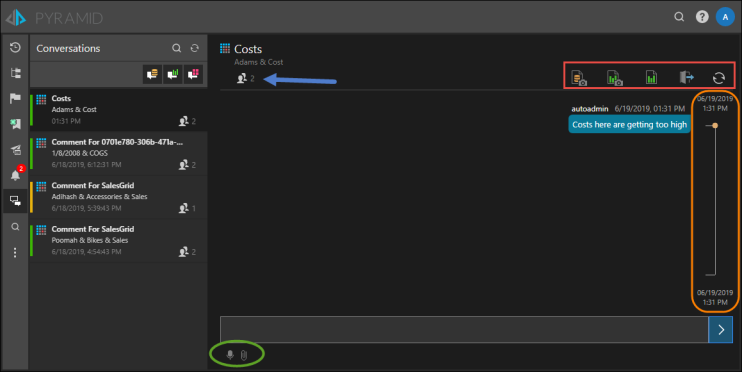The workflow and/or conversation tools allow users to add actionable annotations to data and reports.
- If using the built-in conversations tool - these are threaded commentary and a chat-style experience
- If using a custom workflow - these are multi-step workflow experiences as designed by a developer
Related Topics
- Discovery Conversations
- Start a Conversation
- Managing Conversations
- Present Conversations
- Conversations Feed
Start or Show a Conversation
Discovery
To start a new conversation from a discovery, right-click the relevant data point (cell or chart component), and click Start New Conversation from the context menu.
To show existing conversations, click the conversations icon.
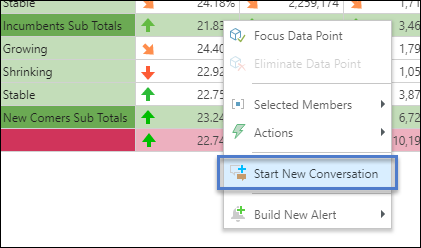
Presentation
To start a new conversation at the cell level from a presentation, right-click the relevant data point (cell or chart component), and click Start New Conversation.
To start a new conversation at the presentation level, open the Presentation Menu and toggle Conversations on (red highlight). This will open the Conversations panel, which will display existing conversations; click the Start New Conversation icon (blue highlight) to create a new conversation.
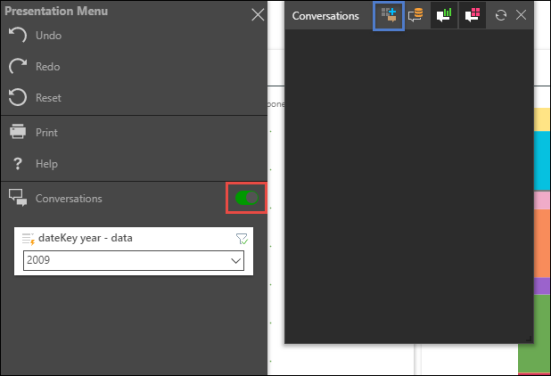
New Conversation Panel
Once you've select 'Start New Conversation' from one of the above methods, you'll be able to create and share your comment. This involves configuring the following fields:
- To: select the roles and/ or users to which you want to send your comment.
- Comment For: by default this is based on the report title.
- Comment: write your message in this field.
- Report specific comment: enable if the comment should be visible for the given member or data cell in the current report only. Disable if it should appear in on the given member or data cell in all reports in which it appears.
- Description: by default this is the member, data cell, or report being commented on.
- Expiration Date: add an expiration date to the conversation. If you don't want it to expire, select 'None'.
- Email Participants: enable this option to send your comment not only via the Bulletin Board but also via email. NoneChoose none if no email is to be sent to a participant. Choose On Creation to send an email alert to participant you've added to the conversation. Choose On Creation and Every Commentto send an email alert to participant you've added to the conversation both on creation and for every new comment added. For all options, participants will receive a bulletin board alert to notify them of the new conversation.
- Save Data Snapshot: store the results of the query at the time the conversation comment was submitted. When this option is selected, a discovery snapshot is also saved by default.
- Save Discovery Snapshot: store the query structure at the time the conversation comment was submitted. It is possible to select this option without also saving a data snapshot.
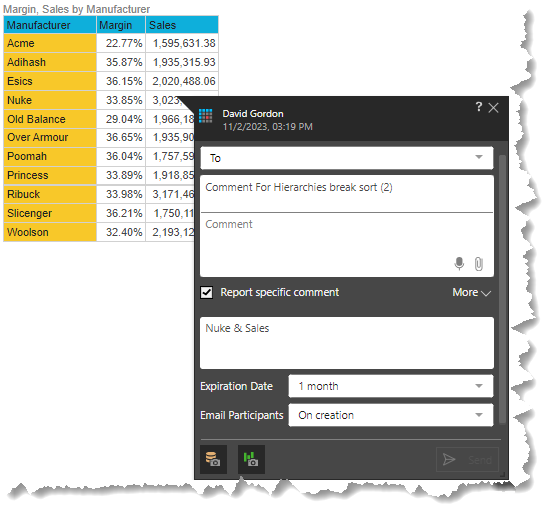
- Click here to learn more about the New Conversation Panel, including report-specific comments and snapshots.
Viewer Conversations Feed
The Conversations Feed lists the conversations in which you're a participant. Simply click on a conversation to open it.
You can filter the Conversations Feed by three types of conversation: model conversations, discover-specific conversations, or present-specific conversations.
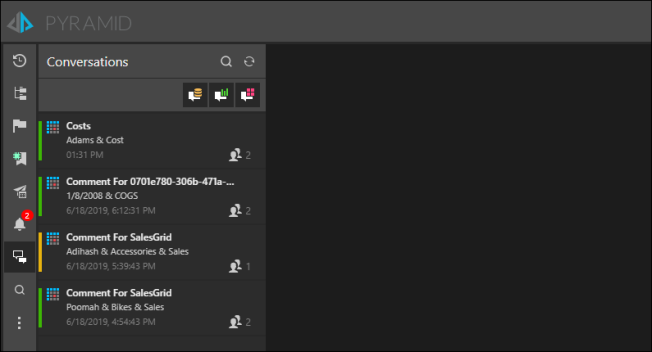
Conversation Actions
You can perform the following actions from an open conversation:
- Load Data Snapshot: Open the original query results stored at the time the snapshot was taken.
- Load Discover Snapshot: Open the original query (from the time that the conversation was started), with current results.
- Load Current Discover Report or Present Dashboard: Open the current discovery or presentation to see the most recent data.
- Leave Conversation: This option is available only to users that are conversation participants, not roles.
- Refresh: Click to refresh the conversation.
- Users: Click the user icon (blue arrow below) to view conversation participants.
- Write your comment in the text box, or record a message or attach a file.
Conversation Timeline
The conversation timeline groups comments in the conversation by time. The position of the circles on the timeline indicates periods with more activity. Comments are grouped depending on the duration of the conversation. For example, an older conversation may be grouped by days or weeks.
